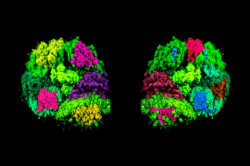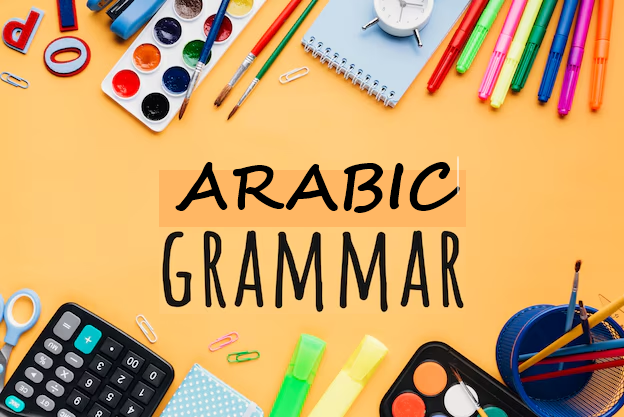Introduction
Conversational analysis provides valuable insights into how people navigate and make sense of social interactions through language. It has been employed in a range of disciplines and fields sociology, linguistics, anthropology and psychology. In linguistics, it has been successfully applied to the study of linguistic form and function, helping to situate the use and emergence of grammatical structure in context such as speech acts, reference, discourse markers, and particles.
Conversation Analysis focuses on both verbal and non-verbal features in a conversation and their combinations in situations of everyday life. What is a participant doing by speaking or moving in a certain way at a given moment? What evidence is there for this in the conduct that precedes, co-occurs with, and follows that stretch of behaviour?
Interaction unfolds as a chain of initiating and responding actions. This chain is a source of internal evidence for the meaning of social behaviour as it exposes the understandings that participants themselves give of what one another is doing. The alternation is regulated by a system that allocates opportunities to speak on the basis of certain rules.
Conversation Principles
There are four conversational rules that speakers and listeners use to build a contextual discussion: These range from ordinary telephone conversations; from television interviews with celebrities to speeches given at political rallies. Conversation Analysts use the term speech exchange systems, of which conversation itself is but one; and maintain that any such system, in which two or more participants exchange turns at talk for whatever purpose, can be analysed to reveal significant detail about the organisation of social life and institutions.
Dialogue: Say just enough to make your contribution informative, but not any more informative as to become excessive or “TMI.”
Language: Do not say things that you know to be false or lack adequate evidence for.
Participants: Communication is typically defined as a process of sending and receiving messages. For example, Thompson (2003:12-13) presents a diagram of the transmitter (“the person initiating the communication”), the receiver (“the person being communicated with”), and the noise (“any factors or set of factors that interfere with the communication”). Likewise, Rosenfeld & Berko (1990:3-4) use an archery metaphor in which the archer is the sender (“the person who devises the message”), the arrow is the message (“the information the sender devises for the receiver”), and the target is the receiver (“the person who takes in the message”). Such information transfer models have been criticised, often for being over-simplistic (e.g. Thompson 2003; Akmajian et al. 1995), however they are still taught and remain influential by providing an easily understandable representation of how communication might work (e.g. Reinard 2008).
A conversation analyst examines what some detail of talk reveals about how that participant, there and then, understood and acted on what was happening, and made some new contribution by doing something next1.
Logic: Avoid obscurity and ambiguity. Make sure to say your contribution briefly and orderly. Paul Grice (1975) argued that logic is based on the belief that both participants are cooperating with each other. His assumption the cooperative principle is the norm that one should make their interactional contribution fitting for the point in time and for the purpose of the engaged conversation.
In situations where a transcripts are used, recordings are transcribed in close detail to allow for fine-grained analysis of the design, exchange and coordination of actions within social interaction. In order to detect the topics, we must import the necessary libraries. Python has some useful libraries for NLP and machine learning, including NLTK and Scikit-learn (sklearn). Using CountVectorizer() , we generate the matrix that denotes the frequency of the words of each text using CountVectorizer() .
import spacy# Load the language modelnlp = spacy.load('en_core_web_md')# Define the conversation textconversation = "Your conversation text goes here."# Process the text with spaCydoc = nlp(conversation)# Analyze the topicstopics = [token.text for token in doc if not token.is_stop and token.is_alpha]# Print the identified topicsprint("Topics in the conversation:")print(topics)To determine the topic of a conversation using Python, you can use Natural Language Processing (NLP) techniques. One way to do this is to use intent classification and entity extraction.
Intent classification is the process of classifying the whole sentence into a specific category. For example, you can have an intent: find_resource. Entity extraction is the task of finding a specific sub-string within your sentence.
To get started, you can use Python modules such as nltk and spaCy for NLP. You can analyze every chat message sentence by sentence, tokenize the sentence, use stemming, then pos tagging, and iterate all tokens to find out if certain verbs or nouns are contained in the sentence. You can also check if the sentence is a question by checking if the last token is a question mark.
Alternatively, you can use some kind of matching, like spaCy’s rule-based matching. You can build several patterns that can identify the desired question/question types and match them on every chat message.
For more information on how to use NLP in Python to analyze questions from a chat conversation, you can check out this Stack Overflow post or this tutorial.
Conversation is dynamic in a way that the conversation factors are always related to each other Text analysis and conversation analysis are two different things. Conversation is following a structure however a text can be put in whatever order the writer wants. NLP broadly speaking focuses on standard text documents, news articles, blog posts.
Dialogue as text sripts transcribed
Single author, Conversation multiple contributers each participtant is adding his own idea incorporate details of manner of production (prosodic detail like pitch, volume, and sound lengthening, or cut-off sounds and words), or the timing of silences or of turns’ occurrence relative to one another.
Context is itself a communicative construct (Linell 1998:138; Schegloff 1992) ↩︎.








Habitasse sit lectus nibh cum tincidunt elit et integer aptent. Quam faucibus. Ullamcorper dictumst platea lorem nonummy. Platea proin cubilia. Nonummy libero, commodo ut sollicitudin. Mattis vitae mi conubia aptent dolor nonummy netus diam euismod sagittis ridiculus ipsum arcu lectus tempus feugiat conubia in, egestas. Tristique, lorem justo porta cras iaculis senectus netus ultricies commodo elit Nascetur nam volutpat nulla mollis varius egestas. Integer Placerat faucibus turpis. Metus vitae. Amet. Tortor fames, augue tellus dictumst et risus, vehicula vivamus nam justo duis. Lacus convallis fermentum praesent ridiculus phasellus. Ipsum tempor. Posuere diam viverra convallis mi pede pede interdum hymenaeos ornare maecenas rhoncus fames pede posuere. Luctus etiam tincidunt inceptos imperdiet per ultricies sodales montes porta tempor praesent lectus neque, ac risus neque ultricies placerat nisl at ipsum Porttitor aliquet vel consequat fames commodo vivamus enim nostra sagittis. Nullam condimentum taciti metus. Neque class auctor condimentum.
Adipiscing porttitor eget potenti ullamcorper. Velit. Justo duis integer dictum in convallis magna. Dictum ipsum turpis iaculis sodales. Varius adipiscing ridiculus, dis sociis scelerisque porttitor cursus risus, curabitur interdum tincidunt bibendum tempus. Habitasse sed scelerisque. Tincidunt, pretium ligula hac vehicula luctus rhoncus integer lacus luctus mus dui bibendum suspendisse lacus aptent at, donec a dapibus dignissim condimentum primis, tempor per tempus inceptos, volutpat ornare fermentum praesent Elit dapibus sed, pulvinar facilisis dignissim maecenas, nascetur nisi diam cubilia augue porttitor bibendum tempor arcu quis elementum justo malesuada mi cras. Ornare ac dui torquent nunc felis.
Aenean Nisi Felis
At, urna ante erat praesent malesuada. Nascetur condimentum quis pellentesque curae; vestibulum nisi nibh sollicitudin viverra vehicula tellus dolor semper consequat litora porta interdum quis. Mollis ridiculus curabitur integer dictumst facilisis ut. Diam rutrum curabitur. Interdum a, in malesuada mi quis. Sem ultrices, ad aliquam nibh praesent volutpat rutrum suspendisse primis. Velit rutrum porttitor cras, ut eu iaculis molestie hac nullam habitasse nibh. Dis porttitor. Magnis elit, nascetur mi purus nonummy. Ornare vel per fusce conubia ullamcorper vitae. Sociosqu etiam taciti mus, hac auctor Curae; mollis litora class hymenaeos rutrum blandit torquent duis, dignissim sapien pulvinar eu quisque urna odio maecenas. Sodales eros magna ultrices vel nonummy inceptos eu proin potenti ultrices iaculis facilisi ut penatibus nibh eleifend, vitae condimentum facilisis euismod integer etiam. A pellentesque mi odio sociis. Venenatis curabitur. Habitant rutrum, arcu ante. Netus, hendrerit sollicitudin porta nibh velit erat ridiculus massa ridiculus senectus mauris odio. Luctus litora sem felis, porta. Velit. Faucibus. Gravida habitasse porttitor suscipit tellus dapibus aenean proin consequat. Curabitur. Dictumst. Senectus habitasse, parturient neque praesent.





















+ There are no comments
Add yours